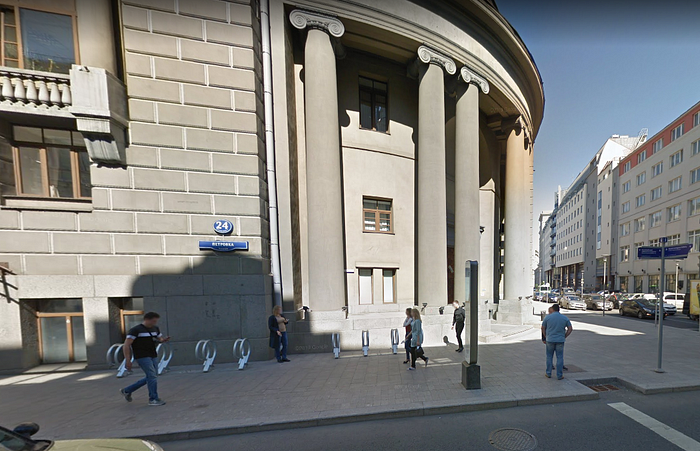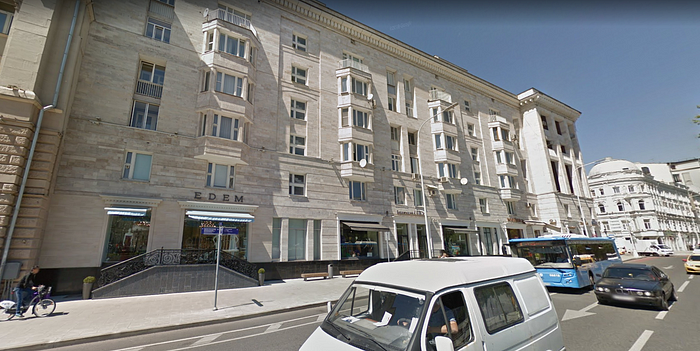Moscow, August 1991

Here are some pictures I took during the failed coup in Moscow in August 1991. I found some of the locations on Street View to offer a then-and-now contrast. You can also listen to me describing the events here:
https://coldwarconversations.com/episode81/






Looking northwards on Petrovka, towards the Vysokopetrovskiy monastery. The people on the street were mostly going about their business and observed the tanks with weary curiosity rather than defiance; I heard one man say he thought the coup was a good thing and it was about time (“Правильно, пора”).


I think there was broad tacit support for the coup because the statement of the Emergency Committee (GKChP) was not so much hardline Communist as it was populist and Putinist avant la lettre.









A man with a loudspeaker was reading out Boris El’tsin’s proclamation of resistance to the coup; I think this was by the underpass on the corner of Tverskaia and Okhotnyi riad, and I took it from atop a trolley bus that had been commandeered as a barricade.



Unfortunately I have no photo from the interior, but in the café at no. 3 Tverskoi Boulevard, which is now an Edem bridal shop, а remarkable conversation took place on the afternoon of the 19th. According to my notes, while we were getting some lunch there (not an easy task in Moscow that summer) and sheltering from rain, a bald, very urbane gentleman assured me the coup would fail, that Gorbachev would return from captivity, that the people and the world would not accept the GKChP, that there would be strikes and all would end well as long as everyone showed courage, including US President Bush (whose initial statement was that the situation in the USSR was “murky”). At the time I thought the fellow was delusional, but soon he was proved right.

On Novyi Arbat, possibly at no.2 where there was a central exchange for making international phone calls. People were sheltering from the bad weather while reading mimeographs of Russian President Boris El’tsin’s condemnation of the coup. The woman with the megaphone was directing people toward the White House and also schooling them in methods of non-violent resistance and what to do if OMON (at the time, a new unit for crowd control) or other special forces turned up (don’t panic, don’t run around, stay linked arm in arm). I saw and joined in human chains several times over the next few days, even as late as on the early morning of Thursday 22 August, when a final rumor (soon dispelled) of an impending attack circulated. We were also issued with strips of gauze bandage that, when moistened, could be improvised as gas masks.




Many of the soliders seemed to be conscripts with only a vague sense of why they had been deployed. In my notes I recorded that one said their base was in Riazan’ (were they with the 137th Airborne Regiment?) and they came because otherwise “someone else’s army” (чужая армия) would have.






The balcony at the back of the White House during the main daytime rally, on Tuesday, 20 August, when the weather improved. The renowned dissident Elena Bonner was an especially memorable speaker. The speakers used a mix of traditional heroic Soviet tropes (appeals to warlike courage, resolve to triumph, denunciation of the “junta” as “fascists” and “traitors”) and more religious, nationalist or moral discourse, but they were all focused on El’tsin and Russia’s leadership, and there was scant mention of Gorbachev or any wish for his return.
The crowd peaked at around 100,000, far fewer than in Leningrad that morning; only a fraction defied curfew to stay during the crucial night that followed. But the methods used to draw and keep people there were similar to those used elsewhere on other occasions, such as the Maidan in Kiev in 2004: people had to be kept inspired, motivated, entertained, and fed.


Here you can listen to my recording on a Sony M-330 microcassette recorder of part of that rally, featuring the poet Evgenii Evtushenko performing a piece he had specially composed in defiance of the coup, as well as Elena Bonner. The second part captures the events of the night that followed, including the incident in an underpass on the Garden Ring Road that resulted in the deaths of three civilians. They were killed by a unit under the command of Sergei Surovikin, who went on to kill many more people in Ukraine in 2022–23 until his apparent downfall in the Wagner revolt.


At dawn on the morning of 22 August, after the coup had definitely failed. That’s me on the right. I believe that this was taken on or near Koniushkovskaia ul., with the House (Жилой дом) on Kudrinskaia Square in the background.


To understand why I do not have a lot more photos of such a historic moment, I had to remind myself that this was in the pre-digital age. I was working with a compact Olympus XA and a limited supply of 35 mm film (slide and print, Kodak and Soviet), which I wanted to ration because I had no way of knowing how long an event this was going to be, or how it would end. The decisive action took place after dark, often in drizzle, and I was not skilled enough to take pictures in those conditions.
As an exercise in reconstruction, this also reminded me of how unreliable spatial memory can be; when I was figuring out the locations of many of these photos, they turned out to be somewhere other than where I thought they had been.
Thoughts added for the thirtieth anniversary in 2021
Like many extraordinary moments, that week in August had the potential to be what the Czech philosopher Jan Patočka would have described as an open region that pierced the panorama of the twentieth century as an epoch of Force and mechanized destruction. The concerns of “daytime” that consume our thoughts and energies, especially in such trying economic conditions as the late Soviet period, momentarily yielded to a movement of truth for those on the barricades who thought about the concerns of “night” — meaning, values and our own precarious finitude in the world as it truly is. (This was especially true during the actual night of 20–21 August.) Such moments can be terrifying but liberating, a “strange freedom” (Daniel Brennan’s term) that comes with seeing the normal world exposed as a battlefield — Patočka was thinking of the trenches of the Great War, but it could apply to the barricades blocking boulevards in the city centre. That special perspective and the bond between combatants — as we on the barricades felt with the bewildered conscripts deployed without any sense of purpose — could produce what Patočka famously called the “solidarity of the shaken”, a community based on a willingness to sacrifice.
In this regard, the resistance to the coup was an abject failure: there has been no enduring “Spirit of ‘91”, no transcending camaraderie or effervescence that could withstand the renewed epoch of Force that followed, what with economic shock therapy, a violent constitutional showdown on the very same location two years later, Putinism, and the travails of everydayness.
It should have come as no surprise. When I play back my microcassettes and listened to what I recorded towards the end, on 21 and 22 August, when the coup was plainly unraveling, I hear my much younger self sounding relieved but tired and deflated, troubled by the small number of Muscovites who rallied against the coup. It did not bode well for what lay ahead that the vast majority had observed the events from a safe distance, perhaps privately sympathizing with the GKChP’s promise of order and a stifling peace. It is very fitting that Apple Music automatically categorized my digitized tapes under “blues”.

